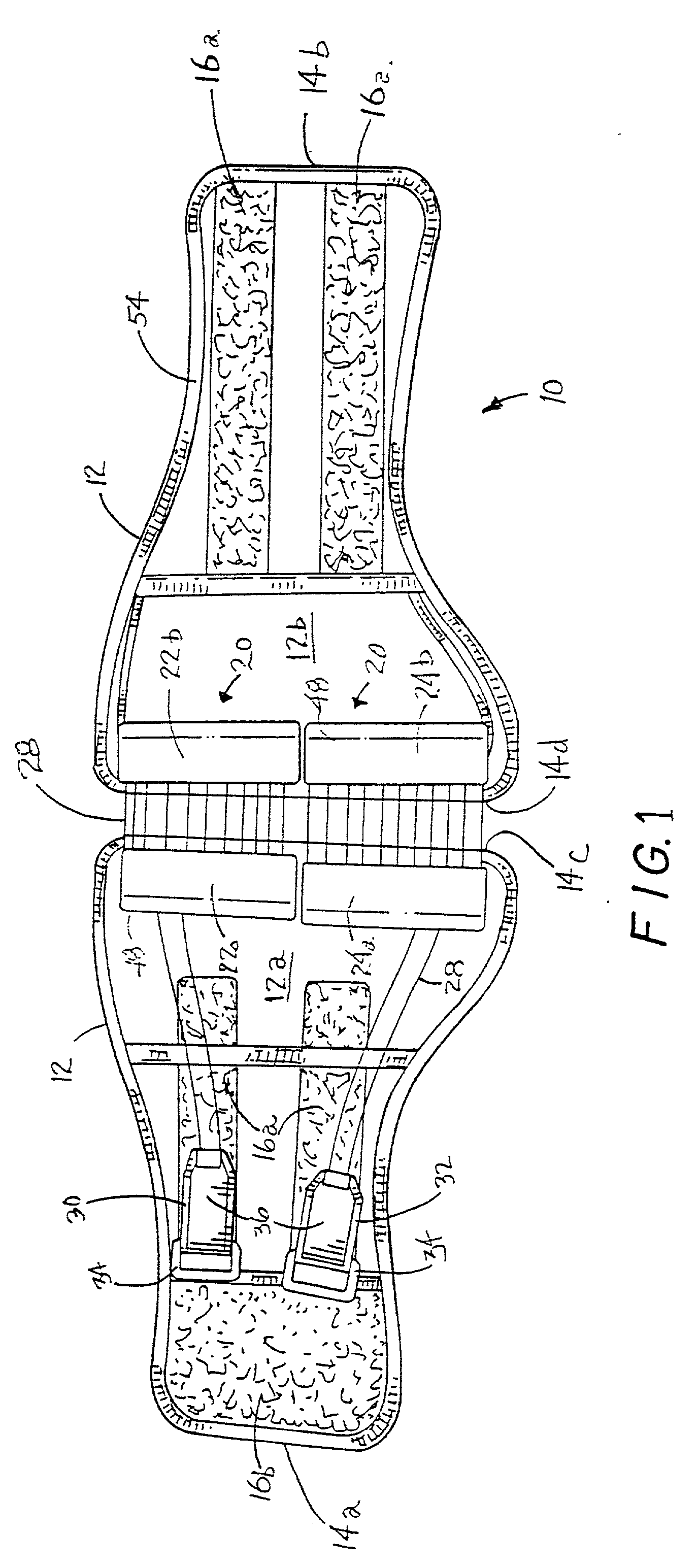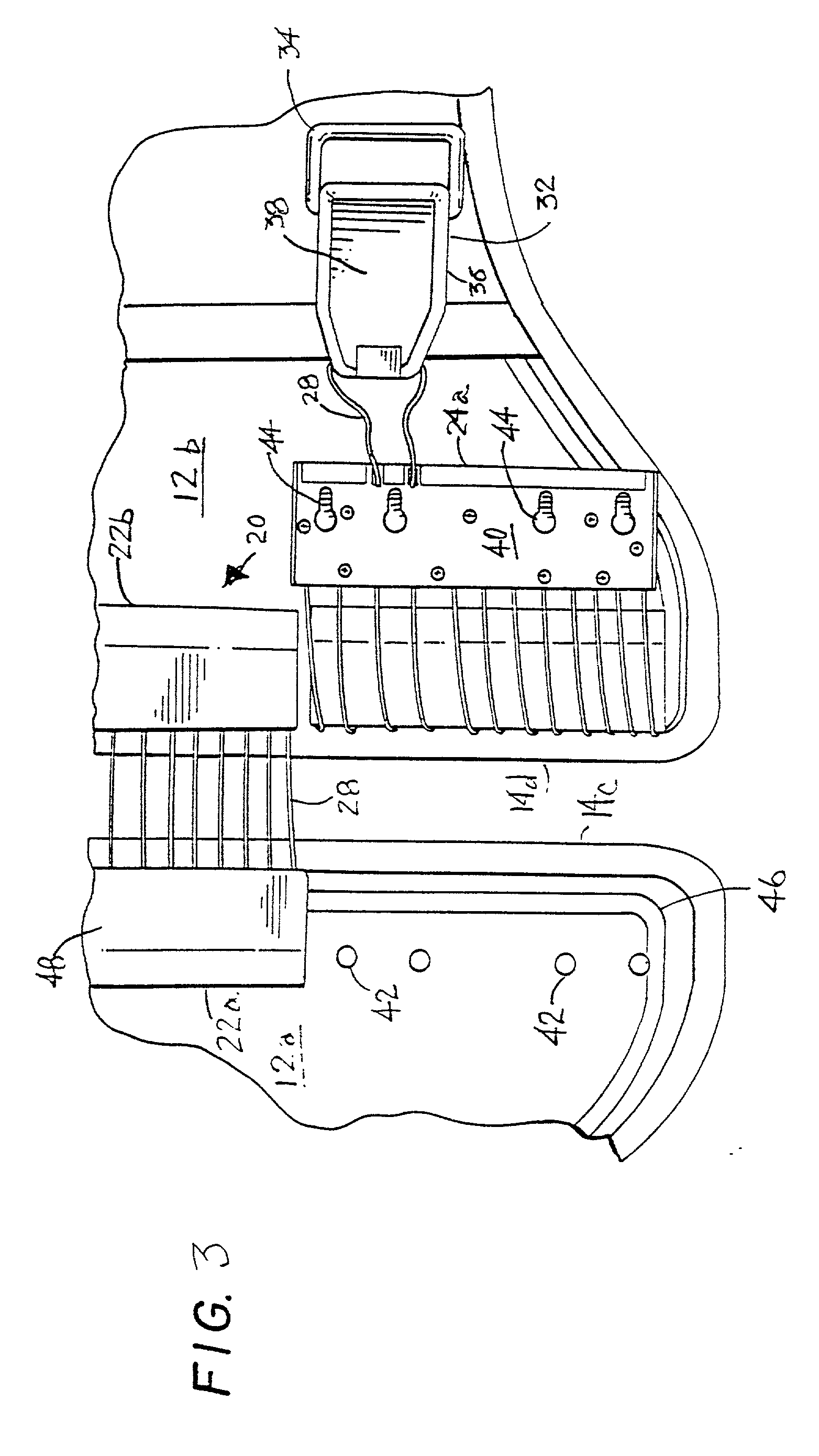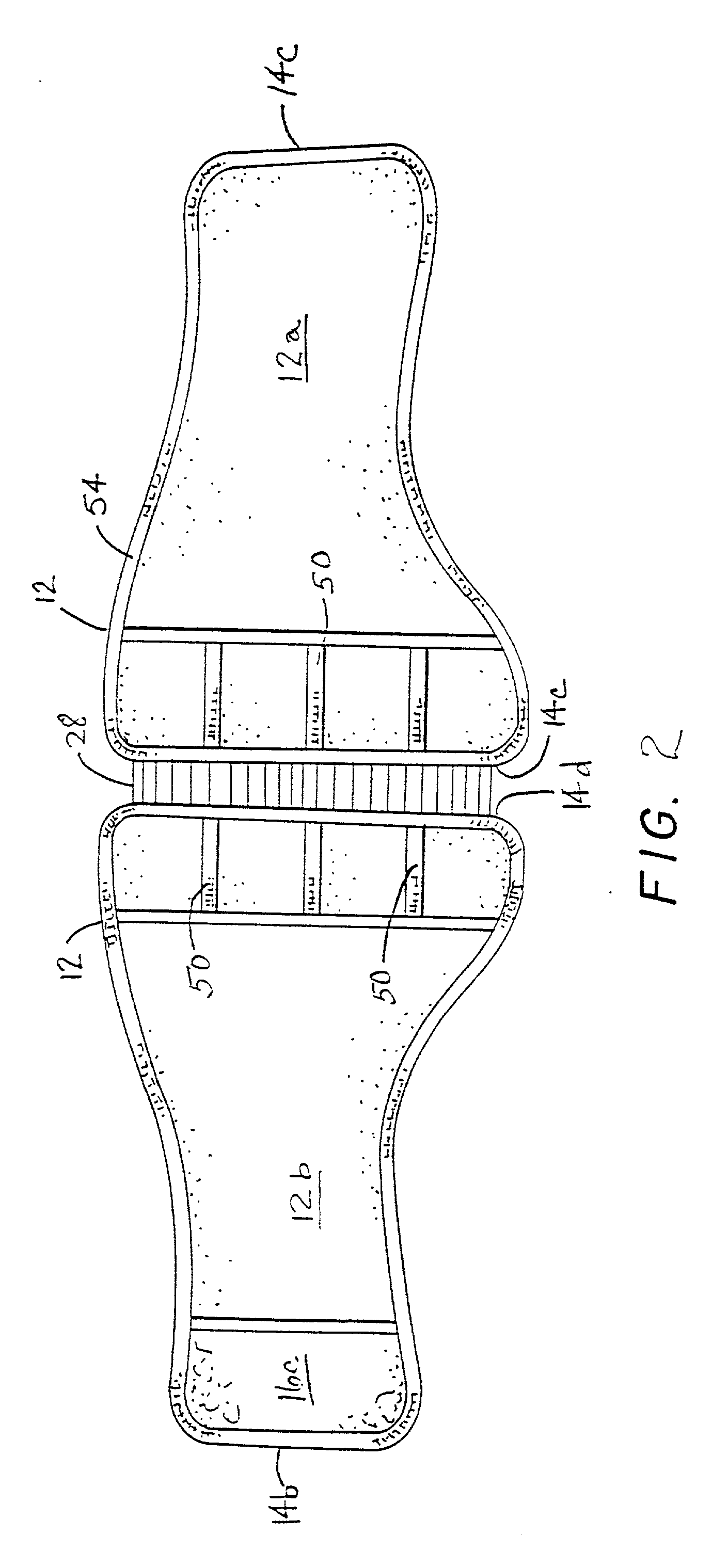Custom fitted orthotic device
a custom-fitting, orthotic technology, applied in the field of braces and orthotic devices, can solve the problems of insufficient strength to make the necessary adjustments, the difficulty of manually adjusting the brace to fit tightly, and the difficulty of appropriately positioning and fastening and subsequently removing the brace, etc., to achieve convenient and rapid adjustment to accommodate patients, easy to donned and doffed, and increased patient compliance
- Summary
- Abstract
- Description
- Claims
- Application Information
AI Technical Summary
Benefits of technology
Problems solved by technology
Method used
Image
Examples
Embodiment Construction
[0033] FIGS. 1-6 show a first embodiment of the present invention. FIG. 1 illustrates the outer side of a body jacket type of back brace 10 in an extended position. The brace 10 includes a brace body 12 made of a material suitable to achieve the type of support sought in treating the condition of the patient wearing the orthotic device. Accordingly, in some situations a softer, more pliant material is preferred where the device is intended to conform substantially to the body of the wearer and provide support but where rigid support is not necessary. In other situations, where flexion is to be avoided, either a more rigid material is selected for all or a portion of the body of the orthosis (such as in body jackets) or the orthotic device is used in conjunction with other component parts made from a more rigid material (such as in thoracic lumbar sacral orthoses). Suitable materials include canvass, nylon, polyethylene, nylon mesh or other similar materials. Where a more rigid ortho...
PUM
 Login to View More
Login to View More Abstract
Description
Claims
Application Information
 Login to View More
Login to View More - R&D
- Intellectual Property
- Life Sciences
- Materials
- Tech Scout
- Unparalleled Data Quality
- Higher Quality Content
- 60% Fewer Hallucinations
Browse by: Latest US Patents, China's latest patents, Technical Efficacy Thesaurus, Application Domain, Technology Topic, Popular Technical Reports.
© 2025 PatSnap. All rights reserved.Legal|Privacy policy|Modern Slavery Act Transparency Statement|Sitemap|About US| Contact US: help@patsnap.com



